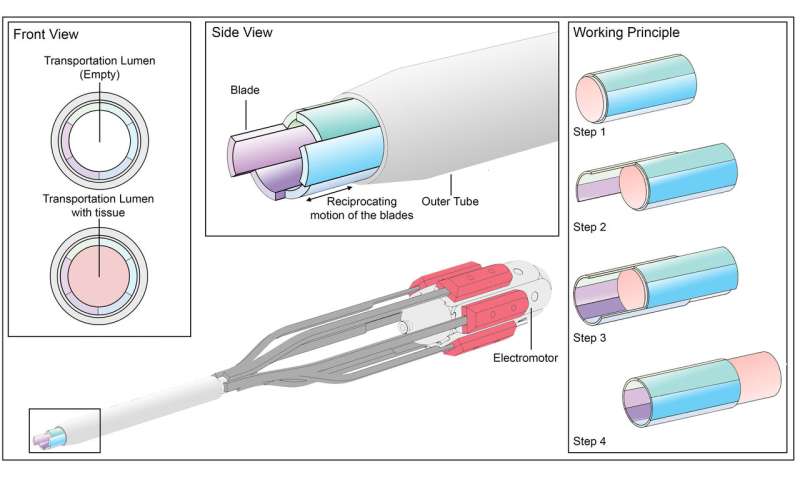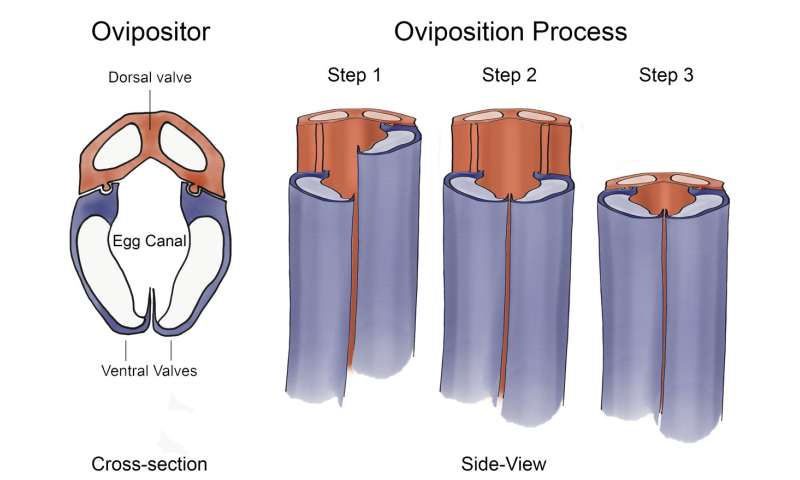
A new tissue-transport device which was inspired by the egg-laying organs of parasitic wasps could greatly advance the field of minimally invasive surgery (MIS), according to a new study in Frontiers in Bioengineering and Biotechnology. The prototype, developed by researchers at Delft University of Technology in the Netherlands, could allow MIS techniques to be used in previously hard-to-reach areas of the body and vastly reduce the trauma from surgery, and therefore recovery time, of patients.
The ovipositor is an ultra-thin organ, shaped like a flexible hollow needle, used by parasitic wasps to lay their eggs in trees or live hosts. Inside this delicate organ is a series of tiny blades that join together with a tongue-and-groove mechanism. The blades can slide independently of each other to create friction forces by using their mechanical movement, and it is these friction forces that the researchers used in the implementation of their design.
“The wasp ovipositor is so thin that it can’t actually fit any muscles within it, so we knew it was a clever mechanical solution worth studying to see if we could recreate it,” explains lead author Dr. Aimée Sakes of the Bio-Inspired Technology Group at Delft University of Technology, led by Prof Dr. Paul Breedveld.
“The ovipositor-inspired transport system uses friction generated between the blades and the tissues to transport those tissues, in the same way the wasp ovipositor works to transport wasp eggs.”
Applying these friction based techniques in the design of new surgery devices may allow researchers to surpass the boundaries faced by current tools, which work by suction. This poses challenges, as suction-based devices lose their efficacy once they are decreased in size past a certain point, making it difficult to limit the tissue damage done in surgery. Dr. Sakes highlights: “We already see challenges arise with current devices, as they often get clogged when removing things like blood clots.”
“We also currently can’t reach remote locations in the human body or perform surgery in miniature structures, such as parts of the brain, due to the relatively large size of MIS instruments. However, our system could potentially enable the removal of tumorous tissues deep inside the human body through miniature incisions in future,” says Dr. Sakes.

Source: Read Full Article
